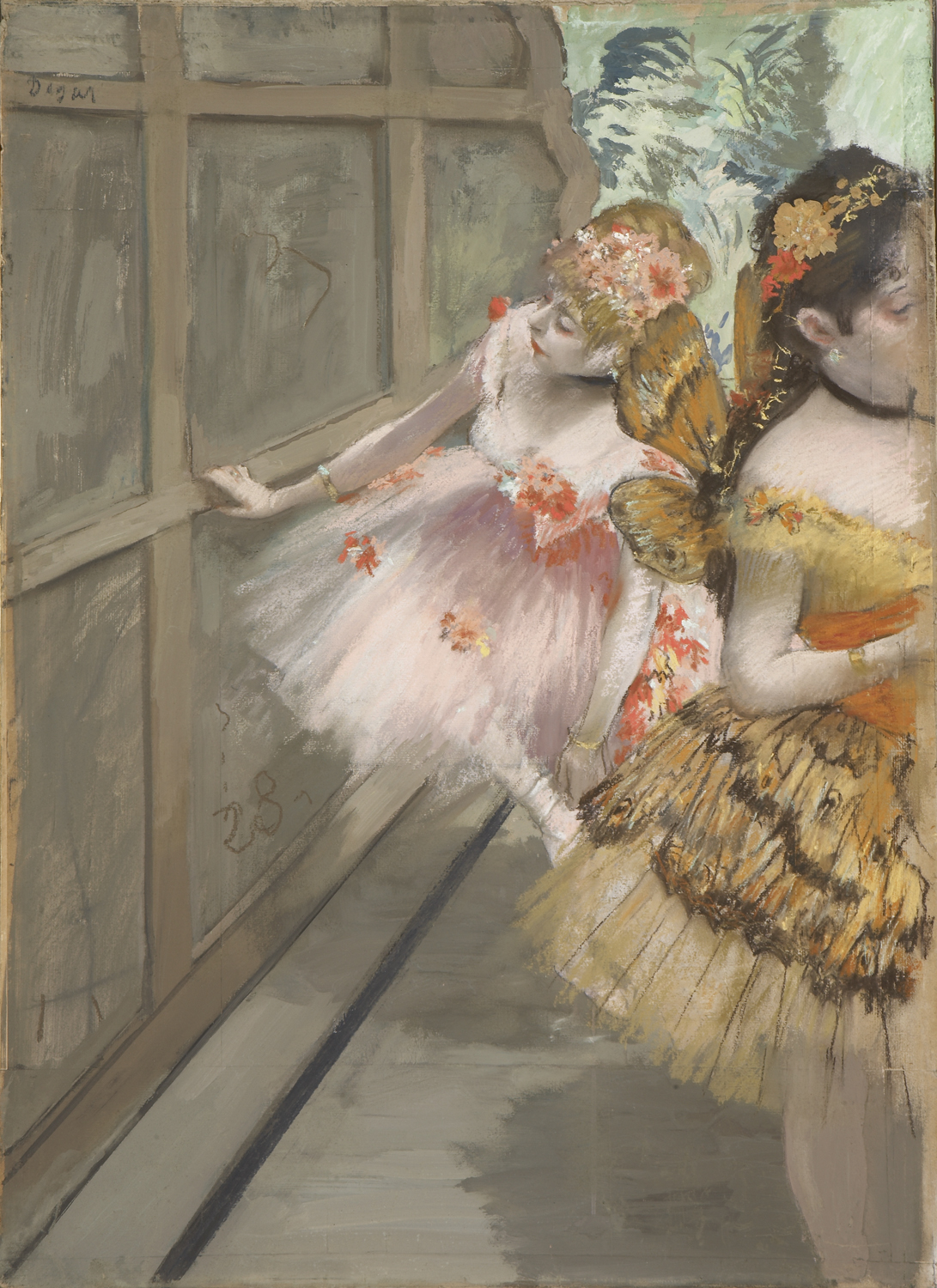Dancers in the Wing
c. 1876–1878
Edgar Degas (French, 1834–1917)
Pastel, gouache, distemper, and “essence” on paper, mounted on board
Norton Simon Art Foundation
Combining pastel, pastel paste, gouache, distemper (glue-based paint), and peinture à l’essence (conventional paint drained of its oil), this picture is among the most technically sophisticated in Degas’s oeuvre. Color is applied wet, with a brush, for the reverse of a stage flat at left and in rapid, liquid skeins for the ornaments in the dancers’ hair, but dry pastel, rubbed over the bare laid paper, creates an airy effect in the tutus. Degas seems to have begun the composition with the dancer in pink and built it outward, adding nine strips of paper around the edges to make room for her companion, dressed as a butterfly. This costume has been identified with a specific ballet, La Source (The Spring), danced at the Paris Opéra in the 1875–76 season.
Powdered Pigments: A Focus on Pastels in the Norton Simon Museum
In 2013, as part of a reinstallation of the 19th-century wing, the Museum created a special gallery to display selections from its stellar collection of pastels. A video narrated by Leah Lehmbeck, former curator, addresses the new space and highlights the innovations that make it especially suited for pastels. As Lehmbeck explains, pastel is a fragile and light-sensitive medium that requires a stable environment: Changes in light and temperature can cause colors to fade and weak pigment binders to disintegrate, resulting in flaking. This gallery has LED bulbs designed specifically for museum use, enabling visitors to perceive the vibrant colors of pastels like Dancers in the Wings while reducing light and exposure by about 20 percent.
